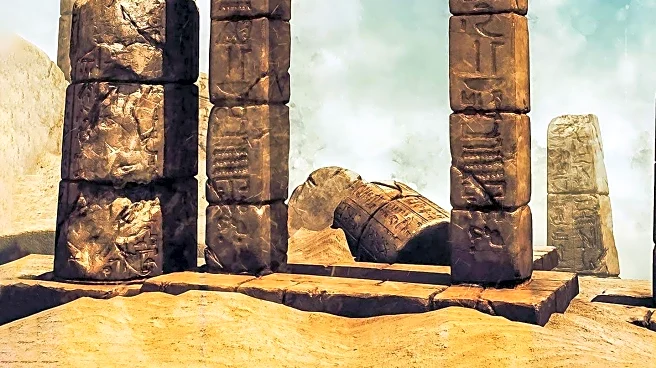What is the story about?
What's Happening?
Recent archaeological findings in northern Saudi Arabia have uncovered life-size engravings of camels, ibex, gazelles, and horses on desert cliffsides, along with tools, beads, and evidence of temporary camps. These discoveries suggest that humans inhabited the region during the Last Glacial Maximum, a period previously thought to be too harsh for human settlement. The research, published in Nature Communications, indicates that temporary bodies of water existed as early as 17,000 years ago, providing necessary resources for human survival. The engravings, some of which are nearly 40 meters above the desert floor, are believed to be cultural expressions marking water sources and territorial claims.
Why It's Important?
This research significantly alters the understanding of human history in Arabia, showing that early humans adapted to extreme climate conditions much earlier than previously believed. The findings provide insights into human resilience and adaptability, which are relevant in today's context of climate change. For Saudi Arabia, these discoveries enhance cultural heritage, offering opportunities for preservation and tourism. The engravings highlight the importance of art as a means of cultural expression and survival, emphasizing the interconnectedness of ancient societies across regions.
What's Next?
The study's findings may lead to increased archaeological interest and further exploration in the region, potentially uncovering more about early human life in harsh environments. The Saudi government might leverage these discoveries to boost cultural tourism, promoting the country's rich historical heritage. Additionally, the research could inspire modern strategies for managing climate stress by learning from ancient human adaptations.
Beyond the Headlines
The engravings and artifacts suggest a complex cultural network that extended beyond the Arabian deserts, indicating long-distance trade and communication. This challenges the notion of isolated ancient societies and underscores the role of art and symbolism in human history. The study also raises questions about the evolution of artistic styles and their significance in marking historical and environmental changes.
AI Generated Content
Do you find this article useful?
















